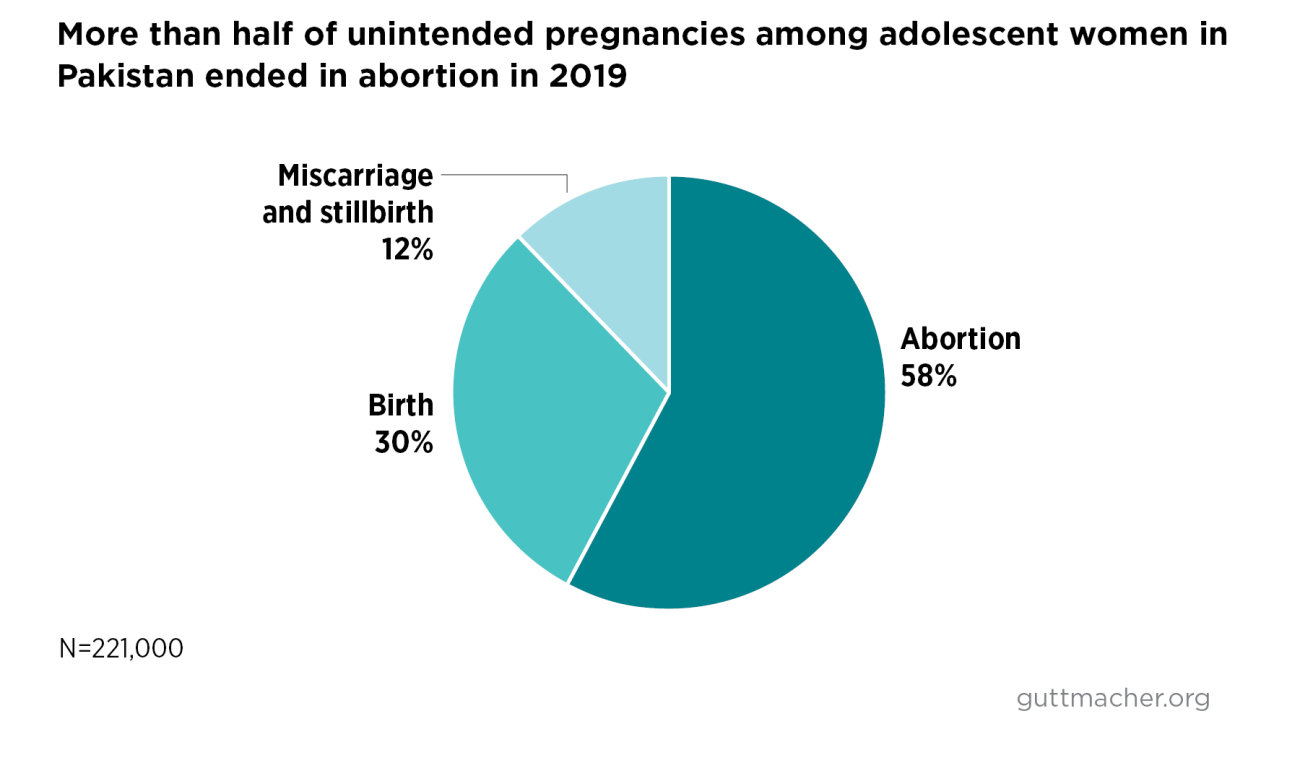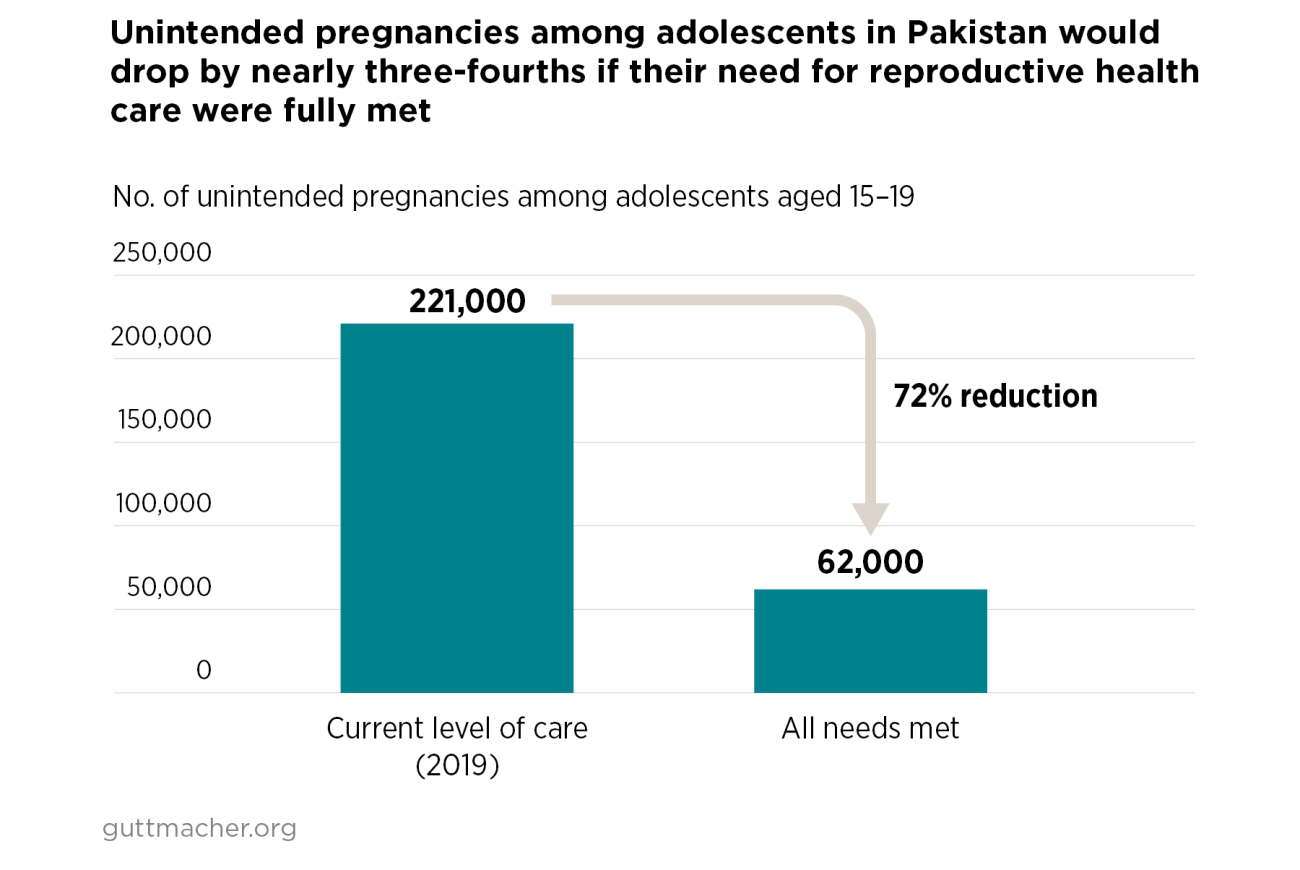Many adolescents in Pakistan are at risk of experiencing poor reproductive health, which is associated with adverse consequences such as early childbearing and parenthood, pregnancy complications, and maternal death and disability.
For instance, about one in five married adolescent women aged 15–19 years in Pakistan have begun childbearing, often without the support of policies and programs that would enable them to make informed and voluntary decisions to protect their health and exercise their reproductive rights.
The data below come from the Adding It Up project, which examines the need for, impact of and cost of fully investing in reproductive health care in low- and middle-income countries, and the 2017–2018 Pakistan Demographic and Health Survey. This fact sheet presents data on the unmet needs for reproductive health care for adolescent women aged 15–19 in Pakistan, as well as the related benefits and costs of meeting such needs.
Adolescents’ needs for reproductive health services
- An estimated 617,000 pregnancies take place among adolescent women aged 15–19 years in Pakistan each year, as of 2019. Some 36% of these pregnancies are unintended, meaning that they were wanted later or not at all.
- More than half (58%) of unintended pregnancies among these adolescents end in abortion. In addition, 30% end in birth and 12% result in miscarriage or stillbirth.


